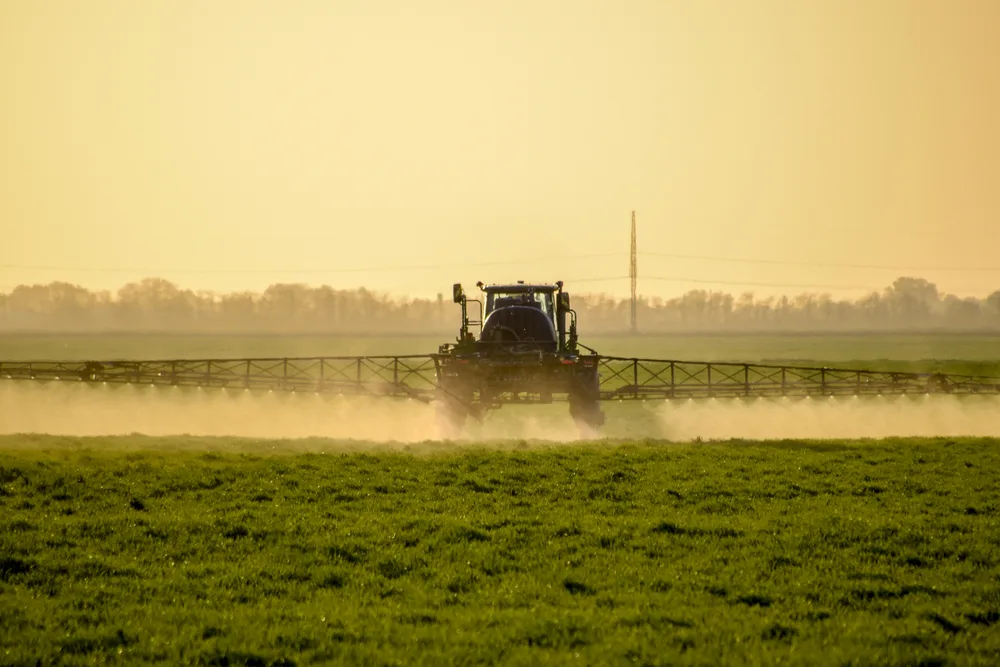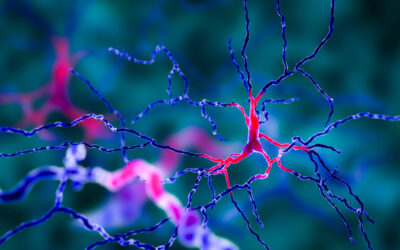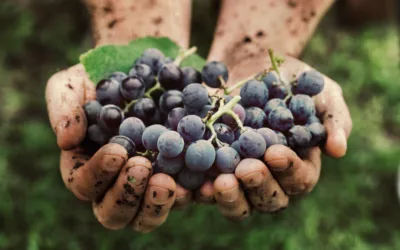Glyphosate: What it is and Why You Should Care
Glyphosate is the most widely-used herbicide in the world. It first went on the market in 1974 as a weed killer and to dry crops out quickly before harvest. Roundup and other glyphosate-based herbicides are still frequently used on lawns, gardens, parks, and school grounds for weed control, but its most prominent use is on the foods we eat such as grains, fruits and vegetables. Over time Roundup resistant weeds have started appearing which has led, of course, to an increase in its use. This is a big problem because of the toxic effects that studies are showing it has on our health. Its use is also harming surrounding biodiversity, polluting nearby waterways and harming soil strength and microbial diversity.

A 2017 study found that human glyphosate exposure has increased more than 500% in two decades. It doesn’t help that the majority of the crops grown with glyphosate are diet staples for many people. It is used on more than seventy food crops but the biggest glyphosate users are genetically modified crops such as corn, soy, oats, and wheat. In fact, a bowl of Cheerios has more glyphosate per serving than vitamins D and B12, both of which are added to try to boost its nutritional value.
It’s not an overstatement to say glyphosate is literally everywhere. Researchers have found it not only in our food, but also our soil, ground and surface waters, rainwater, air and in our bodies. Even if you eat organic, the chances are still quite high that you’re consuming glyphosate, thanks to its ability to easily travel in the air from neighboring farms and agricultural sites. Recent biomonitoring has detected glyphosate in up to 93% of the population.
Glyphosate’s popularity comes in part from the fact that it is effective and relatively cheap. Low-cost versions from China and other countries with relatively relaxed environmental and health regulations flooded the market as glyphosate patents expired in the 1990s, making it even cheaper. This, paired with the fact that crops are becoming resistant to it, therefore requiring more, helps explain why its use has increased so dramatically in the past two decades.
The Problem
The evidence against the use of glyphosate keeps mounting, yet it’s still legally soaking our food supply. Recent health studies have linked glyphosate to cancers such as non-Hodgkin lymphoma, endocrine disruption, infertility, immune dysfunction, birth defects, kidney and liver damage, as well as disruption of the microbiome. In 2015, the World Health Organization’s International Agency for Research on Cancer classified glyphosate as a “probable human carcinogen”. But the WHO is not the only group that recognizes glyphosate’s potential for serious harm. Bayer (the company who now produces glyphosate) is currently involved in almost 10,000 lawsuits.
Scientists have also raised concerns about the other ingredients in glyphosate-based herbicides. While glyphosate is the active ingredient, companies do not have to publicly disclose other proprietary chemicals in these herbicide formulations. Consequently, regulators and researchers cannot fully study these “inert” chemicals to determine their health effects. Many scientists and activists are working to reform the regulatory system so that companies can’t keep these chemicals secret.
There continues to be a deep corruption in most of the world that puts corporate interest over environmental and public health. Companies like Bayer have people inside the government working for the EPA to push policy in their favor. Sadly, this has become an industry standard, and not just for glyphosate.
There are at least ten countries, however, where glyphosate has been or will soon be banned. These include Mexico, Germany, Saudi Arabia, and Vietnam, and at least 15 others have restricted its use. Some states, as well as individual cities and counties in the U.S., including Los Angeles, Seattle, Miami, Baltimore, Austin, and Portland have also taken action to restrict or ban glyphosate.
Who is most impacted by glyphosate in foods?
While the damages are becoming more and more evident with time, there’s one vulnerable group who is truly the most at risk with the highest potential to be negatively impacted by widespread glyphosate contamination and that is our children. They are more susceptible than adults to environmental toxins like glyphosate because they’re still developing their critical neurological, hormonal, and immune systems.
So it’s unfortunate that conventional cereals, oats, pastas, and other easy-to-eat, easy-to-snack on, easy-to-bring-to-school foods that kids love are often the ones most affected by glyphosate. Recent tests by the Canadian Food Inspection Agency found glyphosate contamination in 80 to 90 percent of popular packaged wheat-based products including cereals, pizza, crackers, and pasta.
A study conducted by the Center for Environmental Health reported that children carry much higher levels of glyphosate in their bodies than their parents. And it’s not just school-aged children getting exposure via cafeteria lunches, breakfast cereals, and afternoon snacks. Alarmingly, a recent study found one-third of American newborns had glyphosate in their bodies as well.
Ways to avoid glyphosate
Peeling your produce can also help you to avoid any lingering pesticide residue. But remember that all parts of a plant, including the peels, have something to offer and often times, the outer layer is actually the most nutritious (did you know 30-40% of a potato’s fiber and the majority of its nutrition is found in its skin?). Choosing non-toxic methods of weed control for your lawn and garden will also limit exposure. I understand that living a pristine existence, completely free from toxins is unrealistic but it is important that we are aware of what we are often unknowingly putting in our bodies and taking the steps where we can to mitigate our exposure.
Here are a few links to scientific articles (from an exhaustive list) that will give you an eye-opening breakdown of what glyphosate does to our bodies:
More from Lifestyle
How Inflammation Is Quietly Accelerating Your Aging
We often think of inflammation as the body’s natural response to an injury or some form of tissue damage. This form of acute inflammation is designed to alert our bodies, eliminate harmful invaders and promote tissue repair. But there is a difference between acute/healthy inflammation and chronic/unhealthy inflammation.
Top Tips for People in Pain
My Top Tips for People in PainBy: Ashley Dew So many people in our society are unfortunately dealing with pain on a daily basis. I am not talking about acute pain that comes from acute inflammation, which is normal and important for healing. Chronic pain is...
How to Enjoy the Holidays Without Sacrificing Your Health
How to Enjoy the Holidays Without Sacrificing Your Health While we should all be enjoying this wonderful time of year, it is equally important to enjoy it in a way that we aren’t sacrificing our health and packing on the pounds. Holidays are a time when we are...
How to Reverse Cognitive Decline
Steps to Reverse Cognitive Decline When we think about chronic disease, it’s not uncommon to focus on heart disease, cancer, diabetes, and obesity. These illnesses affect the lives of so many families and duly get a lot of attention in the health and medical...
Benefits of Cold Plunging
Benefits of Cold Water 'Dips'Now that summer is fast approaching, I thought it would be an acceptable time to talk to you about the amazing health benefits of ice baths. You have likely heard a lot of discussion recently about cold plunging because it is a ‘new’ buzz...
Natural Wine: Why you should make the Switch
Natural Wine: Why you Should Make the Switch Natural wine, though around since 7000 BC, has become a mark of swank in certain social circles and cities around the world due to its magical taste, purity and health benefits. As a result, natural wines are all the...
How to to Pimp your Vision Board
The new year brings with it a fresh space to create, to think big and to learn how to visualize your goals into existence. You already have what you need in order to build the life you want. You just have to trust that no matter whether something went wrong in the past, you are fully capable of doing things right this time – and it starts with visualizing!
How to Keep the Promises We Make to Ourselves
As the year turned from 2022 to 2023, millions of us resolved to reinvent ourselves into a polished, new and improved version. Some of us pledged to exercise more, use social media less, better respect our inherent needs, drink more water, rise earlier, read more books, eat healthier, journal, reduce our carbon footprint, cut alcohol out for some time, and learn to meditate…. Any of this sound familiar?
Seven Questions for the New Year
Seven Questions for the New YearWhether you are a ‘resolution maker’ or not, here are a few simple, yet reflective questions that can help steer the course for an incredible 2023.1. What is one thing you would like to celebrate about 2022? Before you put on your...
Boost Your Child’s Immune System
How to Boost Your Child’s Immune System.We live in a microbial world, teeming with viruses and bacteria. They are in the air we breathe, the water we drink, the soil on which we stand and on the apples we eat. But they are not only in the external environment; they...










